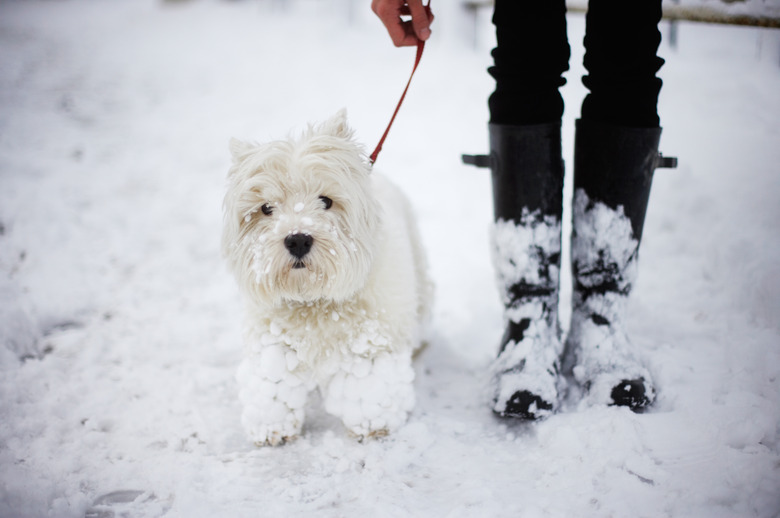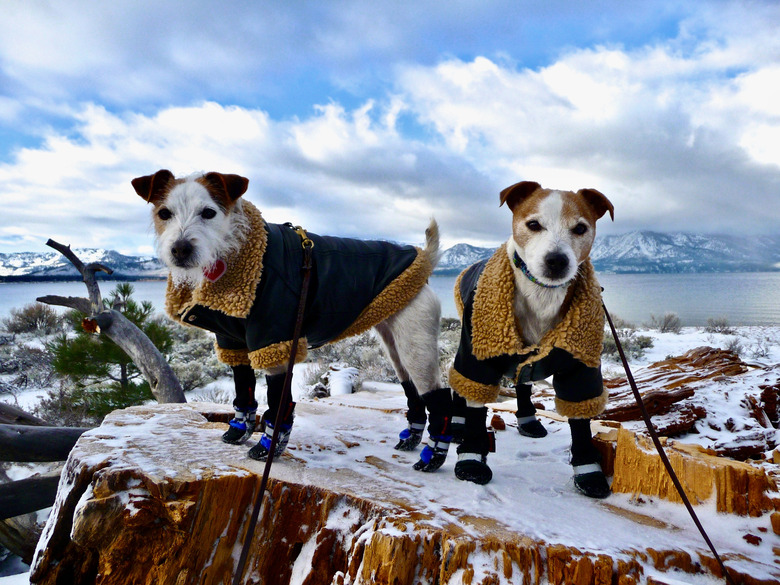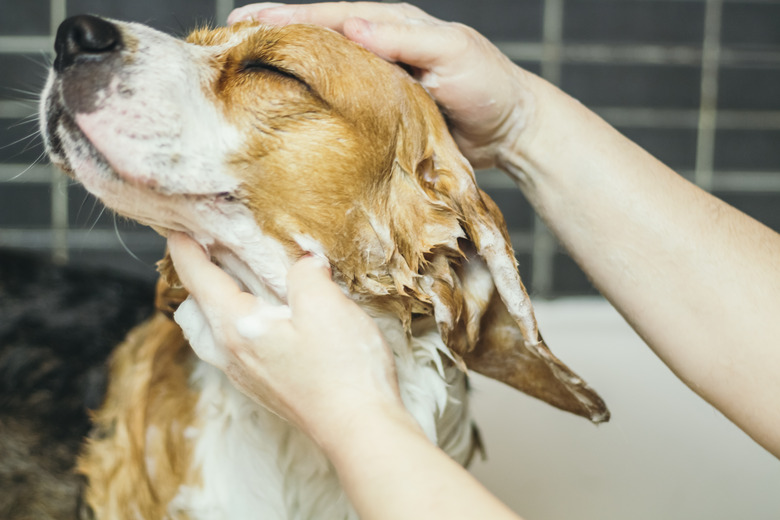How To Groom Your Dog For The Winter
When the winter months hit, you want to be sure that your dog is going to be properly groomed — so that they stay warm all season long. However, maybe you aren't quite sure what kind of grooming is appropriate for cold weather. Or how to take care of your dog's coat after a walk in the snow or ice. When it comes to winter grooming, here are some dog grooming tips you'll want to keep in mind.
Keep up with dog grooming during the winter
Keep up with dog grooming during the winter
Winter dog grooming is the same as grooming your dog all other times during the year — you should keep up with your routine. This means you should not wait until spring to groom your dog. Your dog's hair will likely start matting, and they will be very uncomfortable. When spring comes around, you'll have to deal with all that matted hair. Instead, make sure you take your pup to the dog groomer for their haircuts and you stay on track with your regular bathing schedule.
Dress your dog for the winter weather
Dress your dog for the winter weather
- Put booties on your dog's feet before a walk. Booties can help protect your dog's paws from road soalts and decier chemicals. If they are stepped on with bare paws, they can lead to irritation or injury.
- Purchase a dog coat. A coat can both keep a dog warm and also lessen or altogether prevent fur matting from snow and ice balls.
Dog grooming after a winter walk
Dog grooming after a winter walk
- Dry your dog with a towel. It's very important to keep your dog dry and warm during the winter to prevent them from getting sick. As soon as you dog comes home, take a towel and quickly dry your dog's coat. This will ensure they have a healthy body temperature and won't get sick.
- Don't brush wet fur. If dog's fur is tangled and has a lot of ice balls in it, do not brush them. You should never brush a dog's wet fur. Doing so can create more knots and tangles — and it can be painful for dogs. Instead, brush your dog's fur when it's fully dry.
- Wash your dog's paws. You should wipe
their paws with a washcloth to remove any chemicals such as road salts or deicer. Deicer
can make your dog's paw pads feel sore and painful. It can also burn
your dog's paws and lead to irritation and injuries. To start removing, fill a bowl with warm water — but not hot water. Then, gently dip your dog's paws into the bowl. - Give your dog a warm bath.Your dog's fur can become matted with ice balls when you take them for a walk. When balls of ice stick to a dog's fur, it can become very tough to get rid of it — if you don't address them right away. They can make your dog uncomfortable
and lead to a bacterial infection (if they happen to lick
then) or even lead to a yeast infection. When you bathe your dog, it's important to use dog shampoos and conditioners. Never use shampoos or conditioners made for humans. These are often too harsh for dogs and can irritate their skin. - Address dry skin. If your dog gets dry skin in the winter, ask your veterinarian about your options. They might suggest giving your dog vitamin E or fish oil, or they can help you if the issue is more severe than that.
The bottom line
The bottom line
It's important to pay special attention to your dog's fur and paws in the winter. Make sure you keep up with their regular grooming routine. Consider purchasing booties and a winter coat for your dog to wear on winter walks — to keep them warm and safe. Investing in booties and a coat can protect your dog from winter chemicals and fur matting. When you come home from a walk, dry your dog with a towel right away. Clean your dog's paws and fur with a warm washcloth or bath. Never brush your dog's fur when they are wet. If your dog is prone to having a dry skin in the winter, try calendula or vitamin E. Reach out to your veterinarian and dog groomer to ensure you're doing everything you can for your dog all year round.


